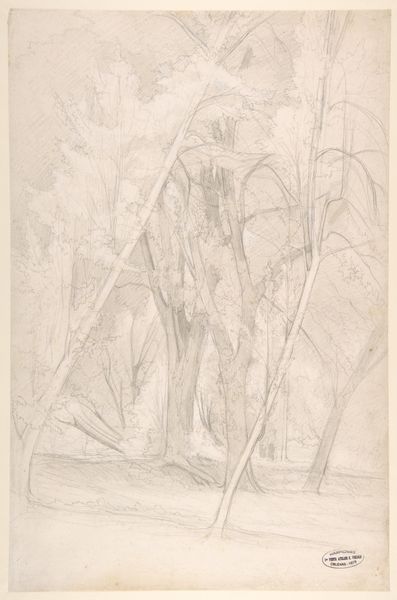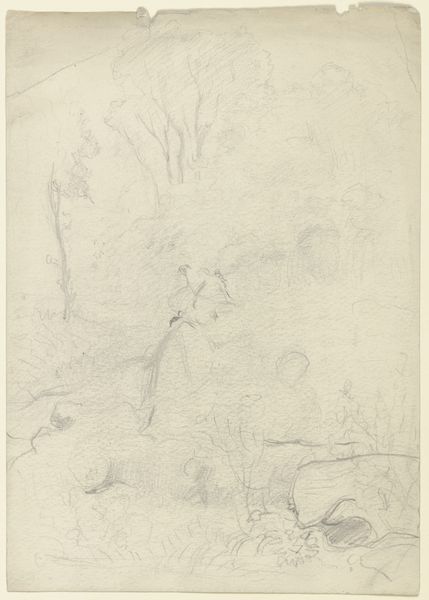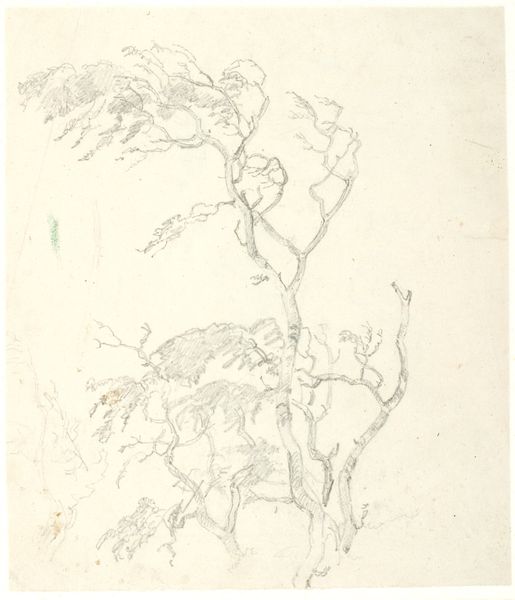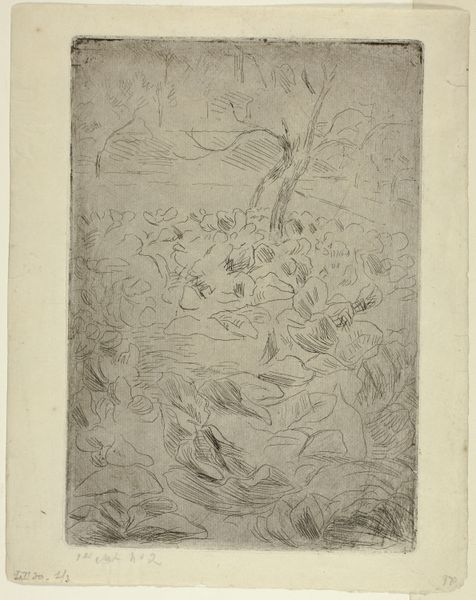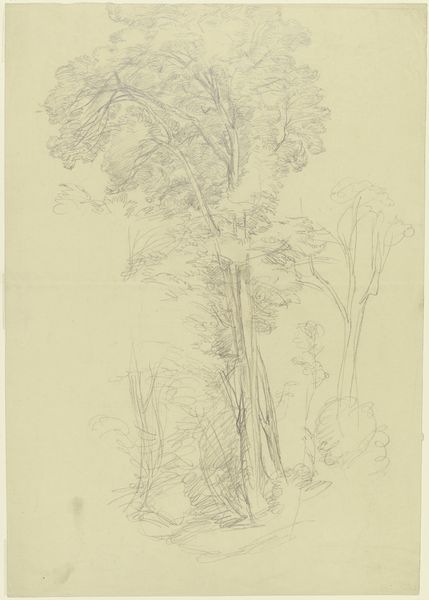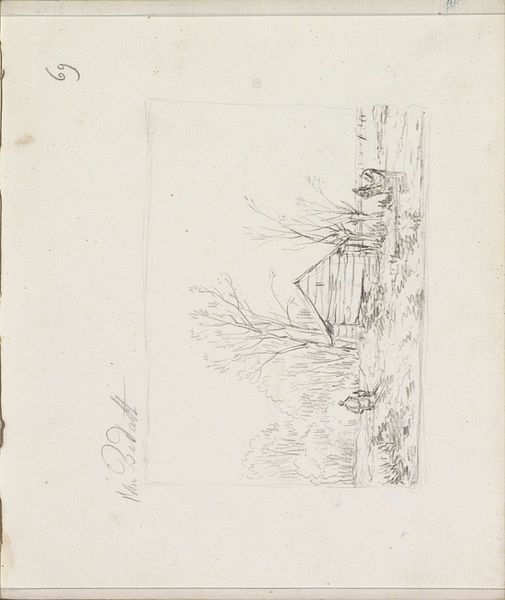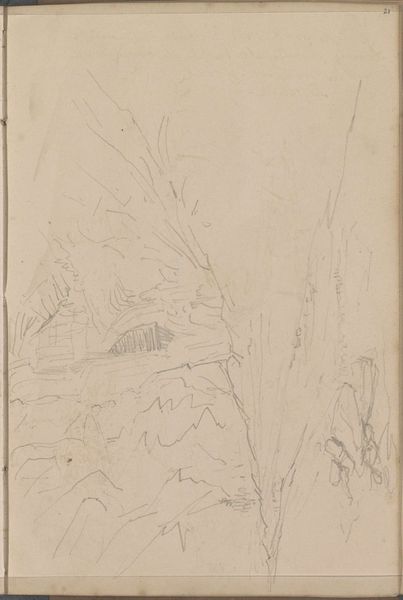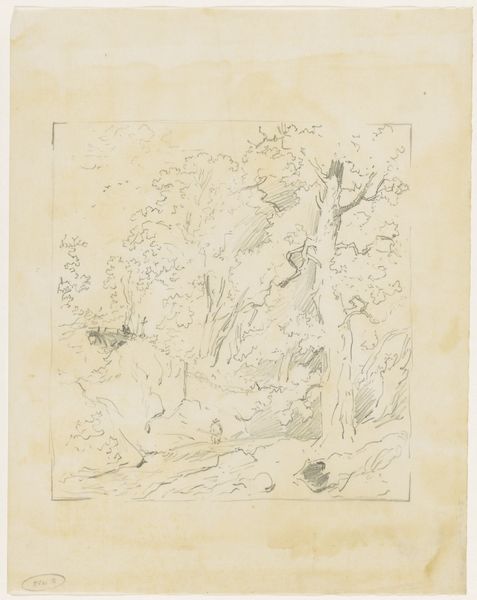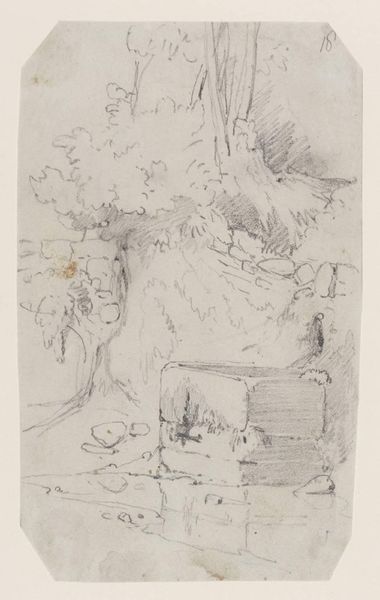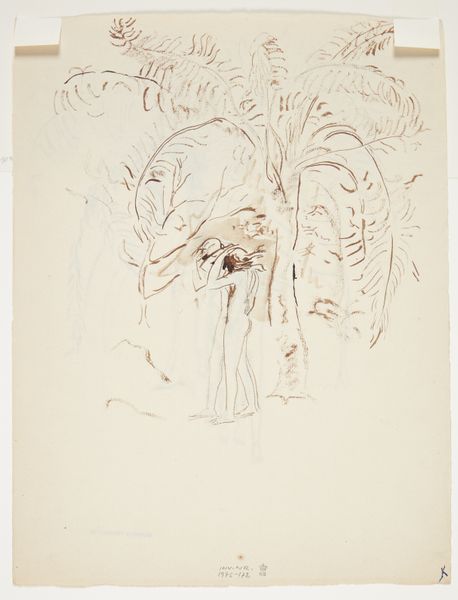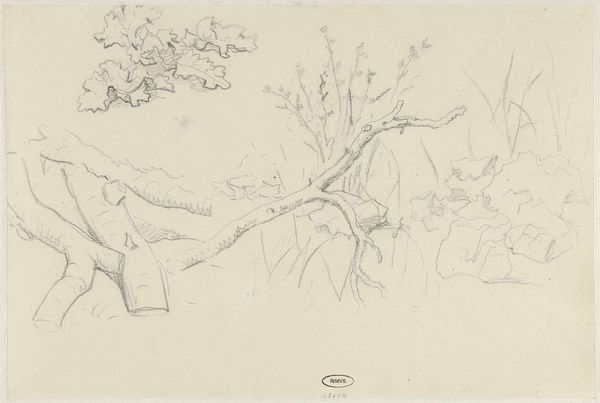
drawing, pencil
#
drawing
#
impressionism
#
pencil sketch
#
landscape
#
figuration
#
pencil
#
sketchbook drawing
#
realism
Dimensions: height 285 mm, width 201 mm
Copyright: Rijks Museum: Open Domain
Editor: This pencil drawing, "Tekenende vrouw en liggende man in een landschap", is by Jozef Israëls and dates sometime between 1834 and 1911. It depicts exactly what the title suggests: a woman drawing and a man reclining. The figures are almost lost amidst all the foliage, creating a casual, unassuming atmosphere. How do you see this drawing in its historical context? Curator: Well, considering Israëls lived and worked during a time of significant social change, especially concerning the role of labor and leisure, it's interesting to observe how this drawing subtly reflects those shifts. The woman, presumably an artist, is actively working, while the man is at leisure. It's worth thinking about how class structures influenced artistic representation at this time. Do you notice anything about how the landscape is used to frame the figures? Editor: Yes, they’re almost hidden! The landscape seems to be almost overwhelming them. I wouldn’t have immediately connected it to class. Curator: Exactly! This blending of figures within the landscape, a tendency in realist art of the period, democratizes the imagery, situating everyone within a common natural space. Israëls presented very human images and that was something revolutionary back then. Considering how art was displayed, think about how a work like this might have challenged conventional subject matter found in prominent salons. What kind of statement do you think Israëls was making about the art world by producing and exhibiting sketches like this? Editor: It makes you wonder if Israëls was critiquing the emphasis on grand historical paintings by focusing on these quiet moments in everyday life. He seemed more interested in intimate scenes. Curator: Precisely. And who decided which works should be selected or omitted in prestigious locations such as a salon or museum? Now, let's ponder that and other social forces as we observe art in different museums! Editor: That’s definitely given me a new lens through which to consider not just this work, but how art institutions function as gatekeepers, consciously and unconsciously. Curator: Agreed, it’s been very fruitful.
Comments
No comments
Be the first to comment and join the conversation on the ultimate creative platform.
